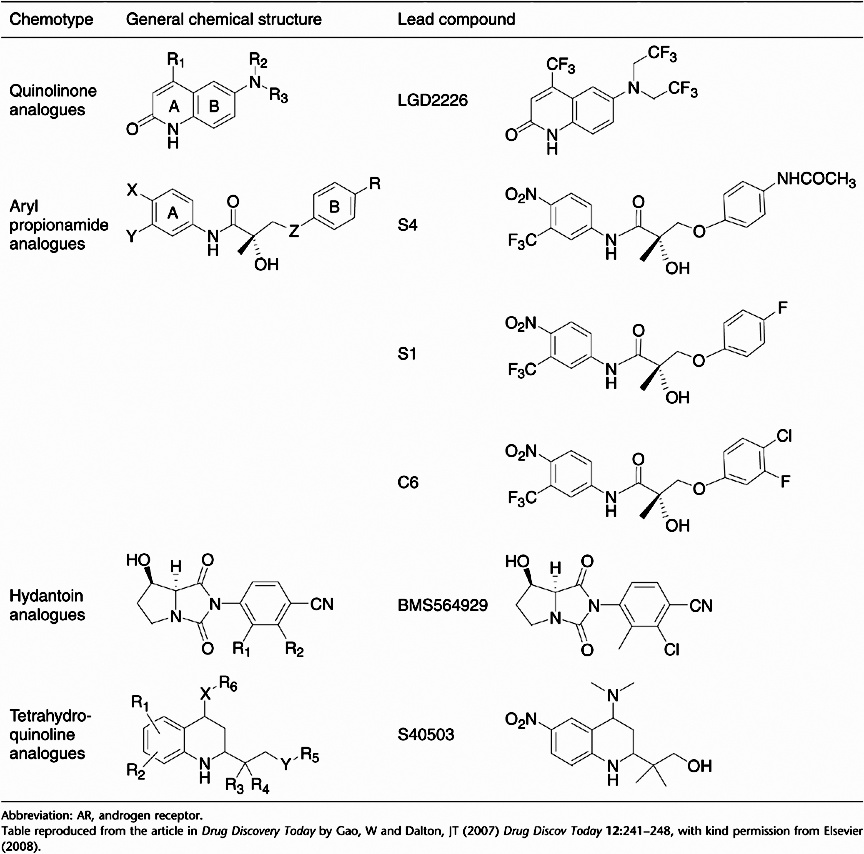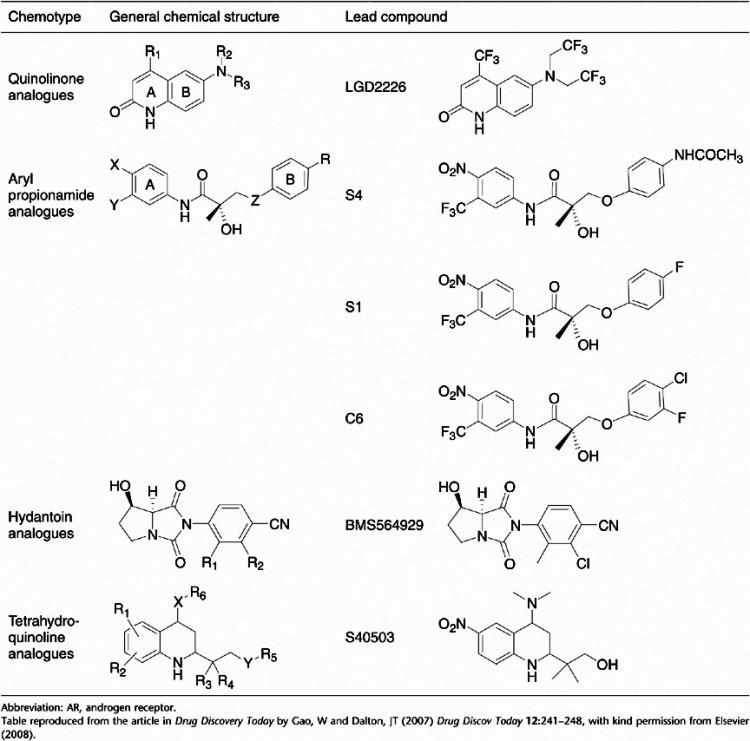
Will Selective Androgen Receptor Modulators Replace Anabolic Steroids?
Oral selective androgen receptor modulators (SARMs) are investigational agents. Studied since 1998, they are still very much in the infancy of their development and marketing. SARMs may be able to provide the benefits of increased muscle mass and bone density, and fat loss that testosterone and other traditional anabolic/androgenic steroids provide but without the unwanted side effects (prostatic enlargement). SARMs are not intended to be a form of testosterone replacement therapy. So, why am I talking about them?
Besides replacement therapy, testosterone and other anabolics can be useful in the treatment of certain aspects of disease. This is a topic close to my heart since this kind of medical use saved my life and that of many others. I spent years researching it to co-write the book “Built to Survive: A Comprehensive Guide to the Medical Use of Anabolic Therapies, Nutrition and Exercise for HIV+ Men and Women” (published in 1999 and then two more editions a few years later and available on amazon.com). Excuse me while I digress from the current topic.
Unintentional weight loss is common in a number of medical conditions (e.g., HIV/AIDS, burns, trauma, cancer, chronic obstructive pulmonary disease). The loss of too much weight, especially muscle mass, increases the risk of complications, including death. Dr. Donald Kotler from New York was able to plot body cell mass data versus mortality from different pathologies and found that once you lose 50% of your normal body cell mass, you die. So, there seems to be a minimum amount of lean tissue that the body needs to stay alive and functioning. Fat mass has not been correlated to increased survival, although losing fat has been proven to improve cardiovascular risks.
Cancer cachexia, or the unintentional loss of muscle mass and body weight, may lead to a loss of protein stores, severe weakness and fatigue, immobility and a loss of independence. It can impair the ability to tolerate and to respond to cancer treatments. An estimated 1.3 million cancer patients in the United States have cancer cachexia. Cancer-induced muscle wasting is thought to be responsible for greater than 20 percent of cancer deaths.
There are no drugs currently approved for the treatment of cancer cachexia. Physicians often prescribe different medications that have the side of effect of increased appetite in an attempt to fight weight loss. Megace, a progesterone-based appetite stimulant, is commonly used to increase weight. Unfortunately most of this weight consists of fat (lean body mass, not fat gain, has been correlated to increased survival.) Megace also increases the chances for blood clots, high blood sugar and bone death.
Anabolics like nandrolone undecanoate and oxandrolone have been prescribed by progressive physicians to treat wasting in patients with non-androgen dependent cancers (colon, throat, lung, stomach, etc.) and HIV associated wasting. Androgens are contraindicated for people with prostate and breast cancer, as they can worsen these types of cancers.
Anabolics are usually prescribed along with testosterone replacement even if the patient starting them for wasting syndrome has normal testosterone levels. Anabolics have the same inhibiting effect as testosterone on the HPGA and they decrease testosterone blood levels if no testosterone is used in combination with them. Many doctors fail to remember this and treat patients who are wasting with anabolics alone, which results in loss of sexual function in patients using them for a few weeks. So, testosterone replacement is essential as an adjunctive therapy when prescribing oxandrolone or nandrolone to patients with HIV, cancer, or other debilitating wasting conditions.
Oxandrolone (brand name: Oxandrin), an oral anabolic agent, is FDA approved as “adjunctive therapy to promote weight gain after weight loss following extensive surgery, chronic infections, or severe trauma, and in some patients who without definite pathophysiologic reasons fail to gain or to maintain normal weight, to offset the protein catabolism associated with prolonged administration of corticosteroids, and for the relief of bone pain frequently accompanying osteoporosis.” (From the products package insert).
Adjunctive means it is an additive or supportive therapy but it does not treat the underlying condition directly. In some patients and depending on the dose and duration, oxandrolone can increase liver enzymes and/or decrease high density cholesterol (HDL), the good cholesterol. Both side effects reverse when the drug is stopped. The usual dose for men is 20 mg/ day (it can be used in women with wasting at 5-10 mg/day). As previously mentioned, testosterone is needed with it since it reduces testosterone and potentially sexual function after a few weeks in some patients. It is expensive at $1200 per month for 20 mg/day but insurance companies pay for it with some restrictions.
Nandrolone decanoate (brand name: Deca Durabolin), an injectable anabolic steroid, is the most studied anabolic agent for wasting syndrome. It requires a weekly injection of 200-400 mg plus testosterone replacement (100-200 mg testosterone cypionate a week or 5-10 grams of testosterone gel per day).
Nandrolone is legally prescribed in an off-label manner to treat wasting syndrome since it is indicated for the management of the anemia of renal insufficiency and has been shown to increase hemoglobin and red cell mass. No liver toxicity has been reported in the many studies, but decreases in HDL and other side effects typical of testosterone have been observed in those using higher doses. Nandrolone is no longer available in regular pharmacies but it is available cheaply in compounding pharmacies by prescription (there is a list in the Appendix section). The average cost for 200 mg/week is $40 per month and it may produce the same effects on lean body mass than oxandrolone at 20 mg/day. Both nandrolone and oxandrolone can have the same side effects of testosterone (polycythemia and gynecomastia).
The only drug that is actually approved in the United States for HIV wasting syndrome that does not require an off label prescription is Serostim (human growth hormone made by Serono), although doctors prescribe oxandrolone and nandrolone a lot more due to cost and lower side effects. Depending on the dose used, Serostim can cost $3000 to $6000 per month. This product can cause joint aches, water retention, and irreversible diabetes. More details on treatment of wasting syndrome can be found in the previously mentioned book “Built to Survive” which I co- authored with Michael Mooney (the book is available on Amazon.com in a print or electronic version and has been translated into Spanish).
Low doses of growth hormone (growth hormone replacement therapy) are commonly prescribed in antiaging and men’s clinics. It is a controversial topic that is beyond of the scope of this book. A lot of details are provided in ‘Built to Survive.”
So back to the SARMs:
SARMs are aimed to have the same benefits as anabolics but without the side effects.
Ostarine is an oral agent that has demonstrated the ability to increase lean body mass and improve muscle strength and performance in postmenopausal women, elderly men, and men and women with cancer cachexia. Ostarine is made by the company GTx’s and has been studied in seven Phase I, Phase II, and Phase IIb clinical trials in 582 subjects.
It had no serious adverse events reported, although I have yet to see the data. Ostarine also exhibited no apparent change in measurements of serum prostatic specific antigen (PSA), sebum production (which causes acne), or decreases in blood levels of LH (which hints that it may not affect the HPGA at the doses tested). I have not seen LDL or HDL and hematocrit or hemoglobin data on this product to assess its effect on lipids and red blood cells, respectively. I am also curious about its effect on liver enzymes.
SARMs have anecdotally not helped increase sexual function, so they probably will not replace testosterone for treatment of hypogonadism. They also decrease the body’s production of testosterone, just like anabolic steroids do. So, testosterone replacement will most probably be still required with their use for illness or aging associated loss of lean body mass. We await more data on these interesting compounds as they may have the same clinical benefits as anabolic steroids without the stigma and possibly without their side effects.
For more information read: Testosterone: A Man’s Guide

About the author
Nelson Vergel is the author of "Testosterone: A Man's Guide- Second Edition" and co-author of the book "Built to Survive: A Comprehensive Guide to the Medical Use of Anabolic Therapies, Nutrition and Exercise for HIV (+) men and women", the founder of the Body Positive Wellness Clinic in Houston, and an expert speaker on exercise, nutrition, testosterone replacement, metabolism , sexual function and therapies to increase lean body mass and decrease fat.
Leave a Reply
You must be logged in to post a comment.